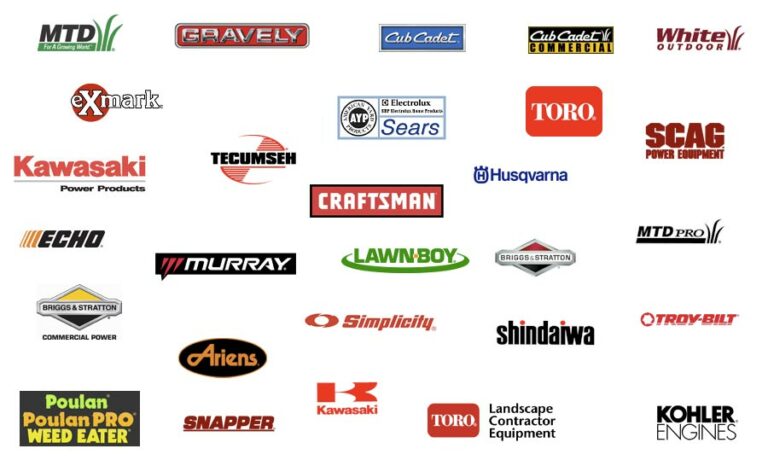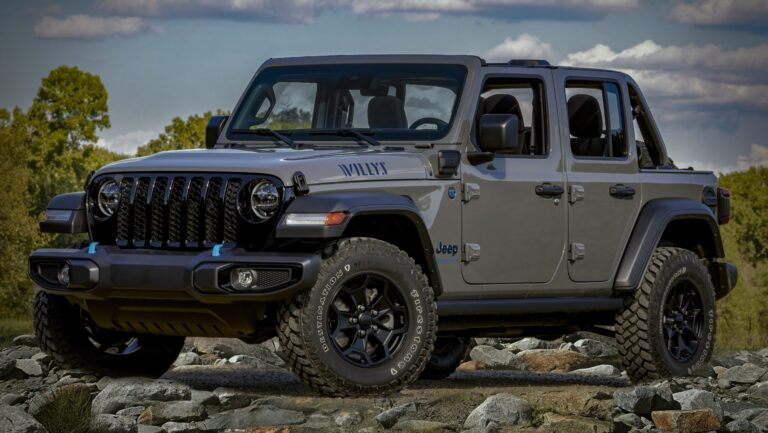North American Car Brands: A Comprehensive Guide to Automotive Innovation and Heritage
North American Car Brands: A Comprehensive Guide to Automotive Innovation and Heritage cars.truckstrend.com
An Engaging Introduction
North American car brands represent a cornerstone of global automotive history, innovation, and economic might. Far more than just manufacturers, these brands are deeply woven into the fabric of American, Canadian, and Mexican culture, symbolizing freedom, power, utility, and progress. From the sprawling assembly lines that once defined an era to the cutting-edge electric vehicle (EV) factories of today, North American brands have consistently pushed the boundaries of automotive engineering and design.
North American Car Brands: A Comprehensive Guide to Automotive Innovation and Heritage
At their core, North American car brands are those with their primary headquarters and significant manufacturing operations based in the United States, Canada, or Mexico. While their reach is global, their foundational identity, design ethos, and market focus often originate from this continent. They are renowned for their rugged trucks, spacious SUVs, powerful muscle cars, and increasingly, their leadership in electric vehicle technology. Understanding these brands means delving into a rich tapestry of history, technological evolution, and a relentless pursuit of meeting the diverse needs of consumers across the globe. This guide will explore the giants and the disruptors, their defining characteristics, and what the future holds for this dynamic sector.
The Titans of Detroit: General Motors, Ford, and Stellantis North America
The automotive landscape of North America has long been dominated by the "Big Three," historically headquartered in or around Detroit, Michigan. These conglomerates, General Motors, Ford Motor Company, and Stellantis North America (formerly Fiat Chrysler Automobiles US), command a vast market share and offer an unparalleled range of vehicles under various well-known marques.
General Motors (GM): A Portfolio of Power and Precision
General Motors, established in 1908, is one of the world’s largest automakers, boasting a diverse portfolio of brands catering to various segments.
- Chevrolet: GM’s most ubiquitous brand, offering everything from compact sedans (though declining) to popular SUVs (Equinox, Traverse, Tahoe, Suburban) and the iconic Silverado pickup truck. Chevrolet also champions performance with the legendary Corvette and Camaro, and leads GM’s mass-market EV push with models like the Bolt EUV and the upcoming Silverado EV.
- GMC: Positioned as a premium truck and SUV brand, GMC offers more upscale versions of Chevrolet’s popular pickups (Sierra) and SUVs (Yukon, Acadia), often with more refined interiors and advanced features.
- Cadillac: GM’s luxury division, Cadillac has reinvented itself from a traditional luxury brand to one focused on performance, advanced technology, and striking design. Its lineup includes sophisticated sedans (CT4, CT5) and a strong emphasis on luxury SUVs (XT4, XT5, XT6, Escalade), with the all-electric Lyriq leading its EV charge.
- Buick: Often perceived as a bridge between mainstream and luxury, Buick offers a range of comfortable, well-appointed SUVs (Encore, Envision, Enclave) that appeal to a more mature or value-conscious luxury buyer.
![]()
GM is heavily invested in an all-electric future, with its Ultium battery platform poised to underpin a wide array of future EVs across its brands, from compact crossovers to heavy-duty trucks.
Ford Motor Company: The Spirit of Innovation and Utility
Founded by Henry Ford in 1903, Ford Motor Company is synonymous with mass production and accessible mobility.
- Ford: The namesake brand is a global powerhouse, particularly known for its dominant F-Series pickup trucks, which have been America’s best-selling vehicles for decades. Ford also excels in the SUV segment with models like the Escape, Explorer, and Expedition, and has successfully reintroduced the Bronco as a formidable off-road contender. The Mustang remains an enduring symbol of American performance. Ford has aggressively embraced electrification with the Mustang Mach-E, F-150 Lightning, and E-Transit commercial van, signaling a significant shift in its core offerings.
- Lincoln: Ford’s luxury division, Lincoln, has experienced a resurgence by focusing on quiet luxury, serene interiors, and advanced technology. Its lineup consists primarily of refined SUVs (Corsair, Nautilus, Aviator, Navigator), offering a distinct American luxury experience.
Ford’s strength lies in its ability to adapt and innovate, from the Model T to its current push for electric and autonomous vehicles, while maintaining its strong heritage in trucks and utility vehicles.
Stellantis North America: A Diverse Portfolio of Passion and Power
Formed in 2021 from the merger of Fiat Chrysler Automobiles (FCA) and PSA Group, Stellantis North America comprises the brands that were formerly part of FCA US.
- Chrysler: Historically a premium mainstream brand, Chrysler’s current lineup is focused on the Pacifica minivan (a segment leader) and the aging 300 sedan. The brand is poised for a significant transformation with a focus on electrified family vehicles.
- Dodge: Known for its "Brotherhood of Muscle," Dodge specializes in performance vehicles. The Challenger and Charger muscle cars, along with the Durango SUV, deliver raw power and an aggressive aesthetic. Dodge is also venturing into electrification with future performance-oriented EVs.
- Jeep: Perhaps the most iconic and globally recognized brand for off-road capability, Jeep offers a full range of SUVs from the compact Compass and Renegade to the mid-size Cherokee and Grand Cherokee, and the legendary Wrangler. The brand also offers the luxurious Wagoneer and Grand Wagoneer SUVs and has introduced popular plug-in hybrid (PHEV) 4xe models.
- Ram: Spun off from Dodge, Ram has established itself as a formidable competitor in the full-size pickup truck market. Ram trucks are known for their luxurious interiors, comfortable rides, and powerful capabilities, consistently challenging the F-Series and Silverado.
Stellantis North America leverages its strong brands and aims to electrify its portfolio while maintaining the distinct character of each marque, particularly in the high-profit truck and SUV segments.
The Independent and Emerging Players: Redefining North American Automotive
While the "Big Three" represent the traditional might, new players have emerged, particularly in the electric vehicle space, challenging conventional wisdom and pushing the industry into new frontiers.
Tesla: The Electric Vehicle Pioneer
Founded in 2003 by Martin Eberhard and Marc Tarpenning, and later popularized by Elon Musk, Tesla revolutionized the automotive industry by demonstrating the viability and desirability of electric vehicles.
- Impact: Tesla’s direct-to-consumer sales model, focus on software integration, over-the-air updates, and a dedicated charging network (Supercharger) forced established automakers to accelerate their EV plans.
- Models: Its lineup includes the luxury Model S sedan, the versatile Model X SUV, the mass-market Model 3 sedan, and the popular Model Y compact SUV. The Cybertruck pickup and Semi truck are poised to disrupt their respective segments.
- Innovation: Tesla is at the forefront of battery technology, autonomous driving (Autopilot/Full Self-Driving), and large-scale manufacturing innovation.
Lucid Motors: Luxury Electrification Redefined
Lucid Motors, founded in 2007 (originally as Atieva), is a luxury electric vehicle manufacturer based in California.
- Focus: Lucid aims to redefine luxury EVs with groundbreaking range, performance, and exquisite design.
- Lucid Air: Its flagship vehicle, the Lucid Air sedan, boasts industry-leading range, blistering acceleration, and a meticulously crafted interior, directly challenging premium gasoline and electric luxury vehicles.
Rivian: Electric Adventure Vehicles
Rivian, founded in 2009, is an American electric vehicle automaker and automotive technology company based in California.
- Niche: Rivian focuses on "adventure vehicles," combining rugged capability with electric powertrains.
- Models: Its initial offerings, the R1T electric pickup truck and R1S electric SUV, have garnered significant attention for their innovative design, impressive off-road prowess, and substantial range. Rivian also produces electric delivery vans for Amazon, demonstrating its commercial vehicle capabilities.
These new entrants showcase the entrepreneurial spirit of North American automotive innovation, particularly in leading the charge towards a sustainable, electrified future.
Key Characteristics and Innovations of North American Brands
North American car brands are distinguished by several defining characteristics and have been at the forefront of significant automotive innovations:
- Dominance in Trucks and SUVs: Historically, and currently, North American brands lead the world in the design, production, and sales of pickup trucks and large SUVs. These vehicles are integral to the North American lifestyle, serving as workhorses, family haulers, and adventure vehicles.
- Performance and Muscle Car Heritage: Brands like Ford (Mustang), Chevrolet (Camaro, Corvette), and Dodge (Challenger, Charger) have cultivated a global reputation for powerful, high-performance vehicles that embody American automotive passion.
- Spaciousness and Comfort: North American vehicles often prioritize interior space, comfort, and ride quality, catering to longer commutes and family travel.
- Ruggedness and Durability: Many models, especially trucks and SUVs, are engineered for demanding conditions, emphasizing strength, towing capacity, and off-road capability.
- Pioneering Electrification: While initially slower to adopt, North American brands are now aggressively investing in and launching a wide array of electric vehicles, from mass-market cars and trucks to luxury performance EVs. Tesla, Lucid, and Rivian are leading this charge, while GM, Ford, and Stellantis are rapidly catching up.
- Advanced Technology Integration: Modern North American vehicles feature sophisticated infotainment systems (e.g., Ford’s SYNC, GM’s Super Cruise, Stellantis’ Uconnect), advanced driver-assistance systems (ADAS), and connectivity features.
- Strong Dealership Networks: The traditional "Big Three" benefit from extensive dealer networks across North America, offering widespread sales, service, and parts availability, a crucial consideration for buyers.
Important Considerations for Buyers
When considering a North American car brand, prospective buyers should keep several factors in mind:
- Brand Identity and Niche: Each brand has a distinct personality. Do you need a work truck (Ford F-Series, Ram, Silverado), a family SUV (Explorer, Tahoe, Grand Cherokee), an off-road adventurer (Wrangler, Bronco), a performance machine (Mustang, Challenger), or a cutting-edge EV (Tesla, Lucid, Rivian)? Understanding your primary need will guide your choice.
- Reliability and Durability: While historically there were perceptions, modern North American vehicles have significantly improved in quality and reliability, often matching or exceeding international competitors. Research specific models and consult independent reliability ratings (e.g., Consumer Reports, J.D. Power).
- Resale Value: Trucks and SUVs from North American brands generally hold their value well, especially popular models like the F-150, Silverado, Ram, and Jeep Wrangler. EVs are a newer segment, and their long-term resale value is still evolving.
- Service and Parts Availability: With vast dealer networks, servicing and finding parts for vehicles from GM, Ford, and Stellantis is generally easy and accessible across North America.
- Technological Integration: Evaluate the infotainment systems, safety features, and connectivity options. Many North American brands offer intuitive user interfaces and advanced driver-assist technologies.
- Electrification Transition: If considering an EV, look into range, charging infrastructure (home and public), battery warranty, and government incentives. North American brands are at the forefront of developing robust EV ecosystems.
Challenges and Future Outlook
North American car brands face a dynamic landscape filled with both challenges and immense opportunities.
- Competition: Intense competition from established European and Asian automakers, as well as new global EV startups, continues to drive innovation and pressure pricing.
- Regulatory Environment: Stricter emissions standards and fuel economy regulations globally necessitate significant investment in new powertrain technologies, particularly electrification.
- Supply Chain Disruptions: Global events, such as semiconductor shortages and raw material price fluctuations, have significantly impacted production and sales.
- The EV Transition: While an opportunity, the shift to electric vehicles requires massive capital investment in R&D, battery production, charging infrastructure, and retooling factories. It also demands a shift in consumer perception and widespread adoption.
- Software-Defined Vehicles: The future of automotive increasingly lies in software. North American brands are investing heavily in developing in-house software capabilities for infotainment, autonomous driving, and vehicle connectivity, transforming cars into rolling computers.
- Future Vision: The future of North American car brands is defined by continued innovation, particularly in electrification, autonomous driving, and connected services. They are focusing on sustainable manufacturing, expanding global reach, and adapting to new mobility solutions beyond traditional car ownership. The iconic truck and SUV segments will remain strong, but their powertrains will increasingly be electric.
Price Table: Typical Ranges for North American Car Brands
Please note that these are typical price ranges in USD for base to mid-to-high trim levels. Prices can vary significantly based on specific models, trims, options, location, and market conditions. Luxury and high-performance variants can often exceed the upper end of these ranges.
| Brand Family / Segment | Representative Brands/Models | Typical Price Range (USD) | Key Characteristics |
|---|





